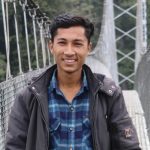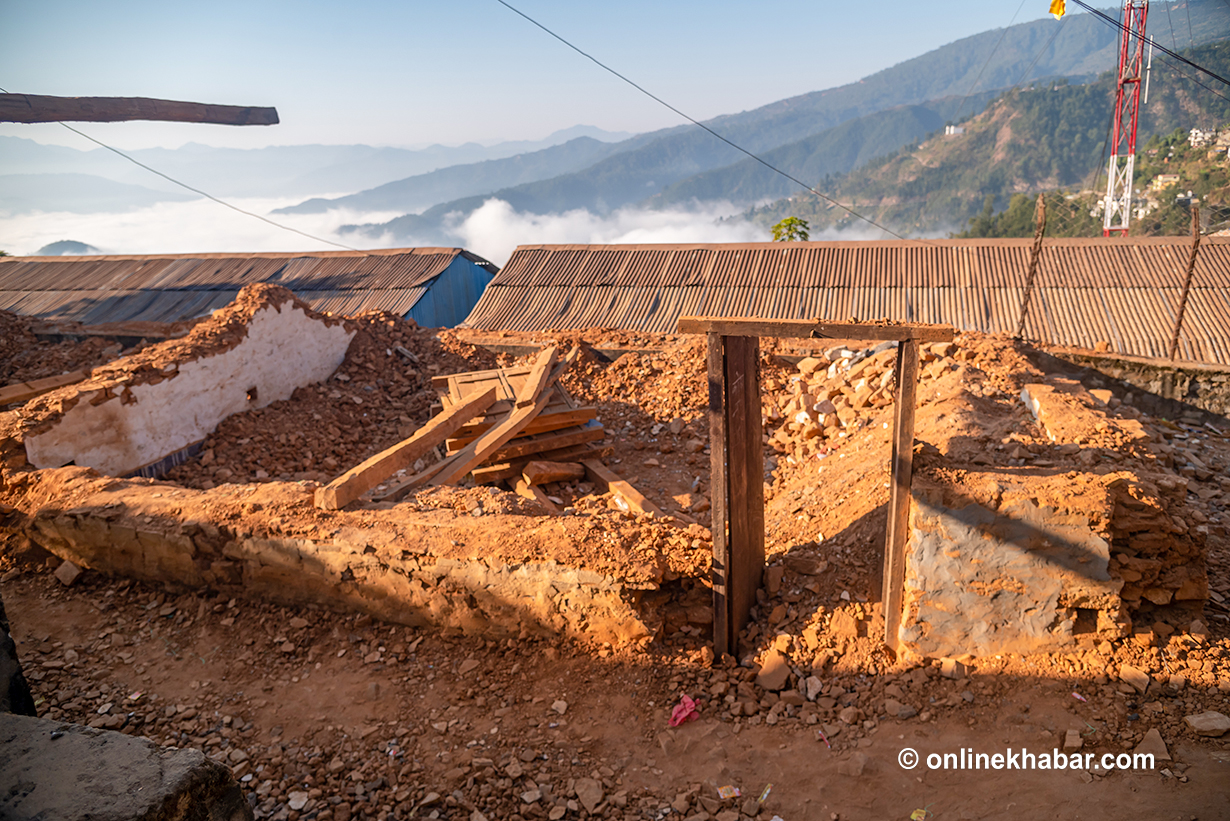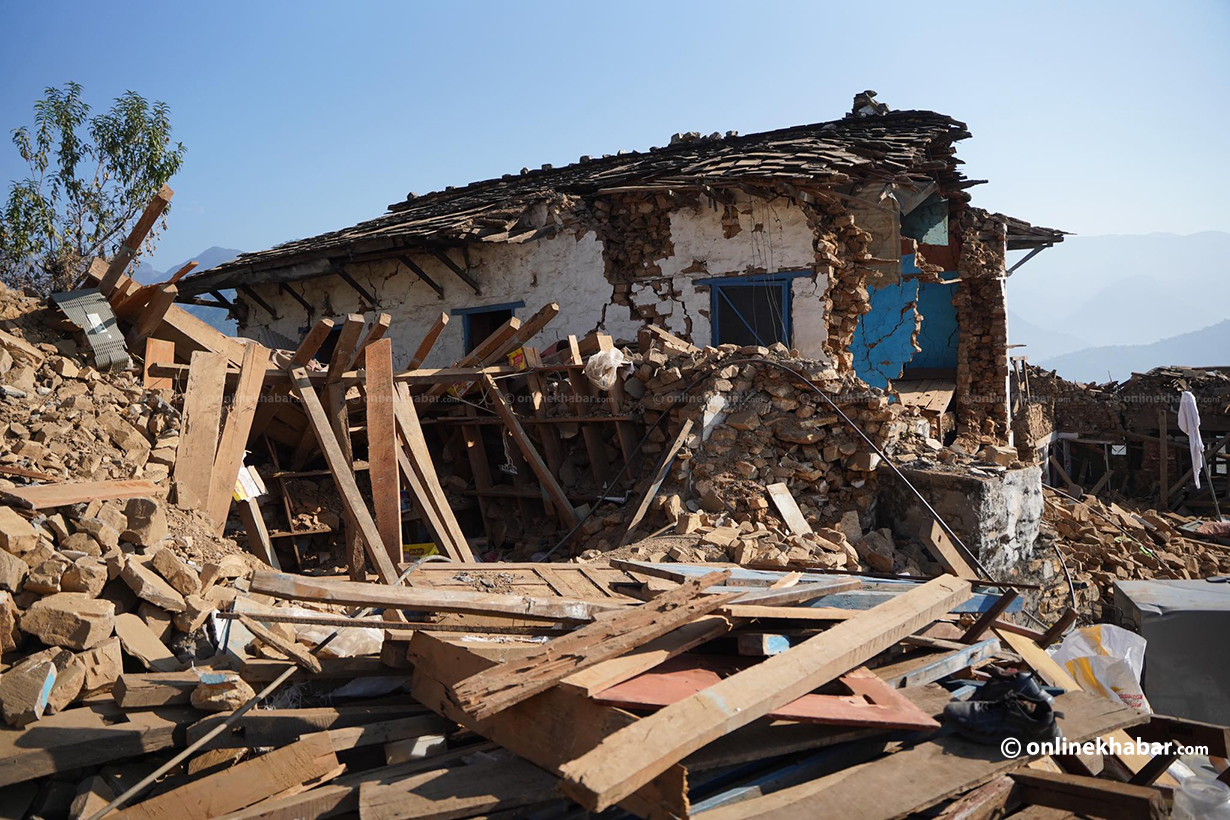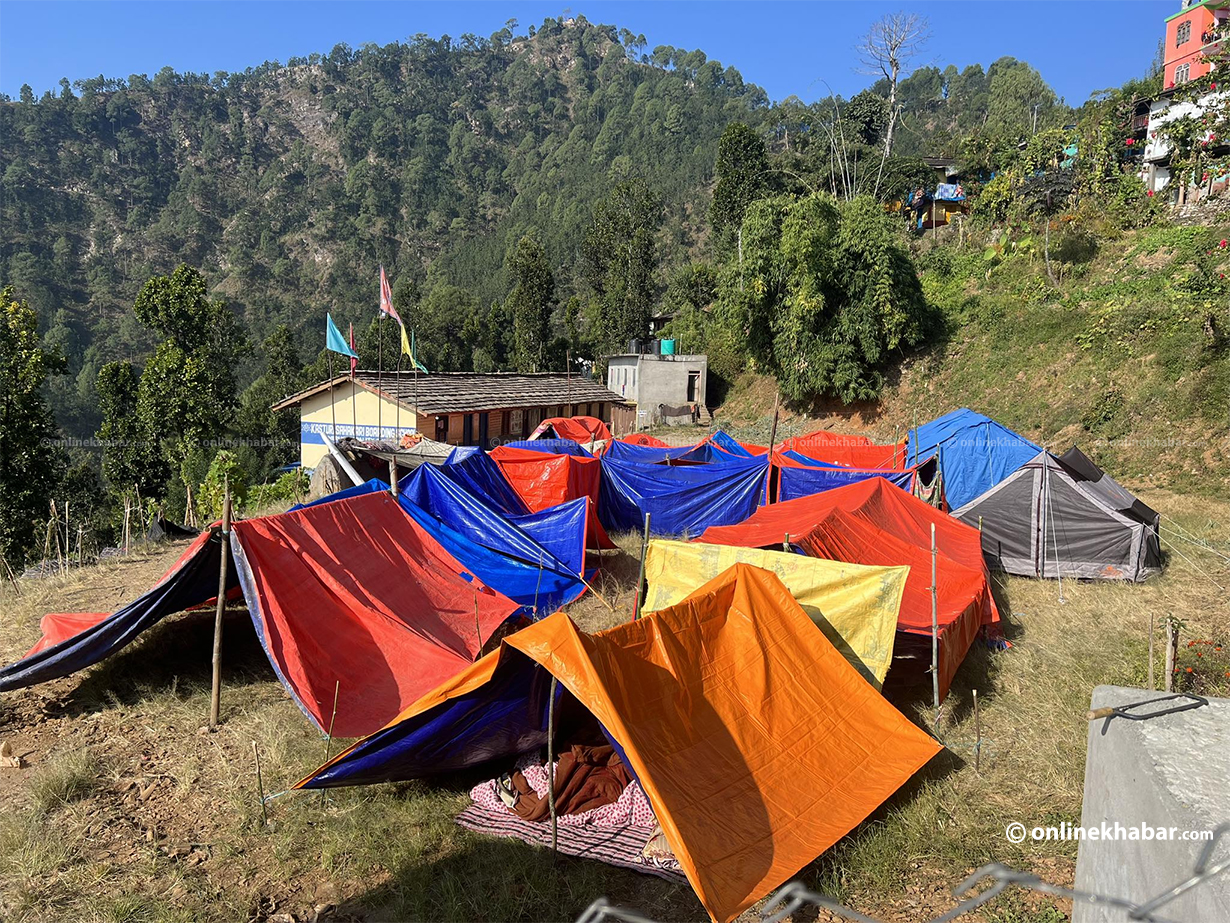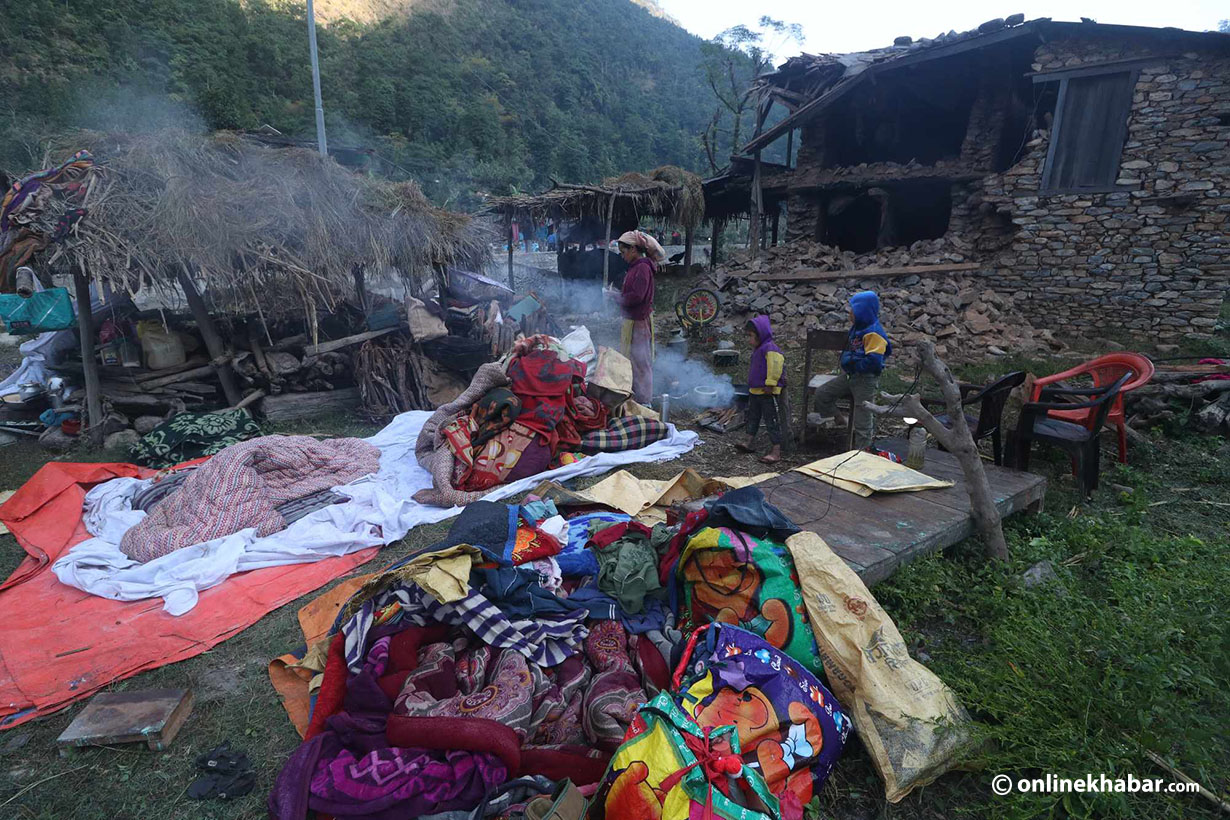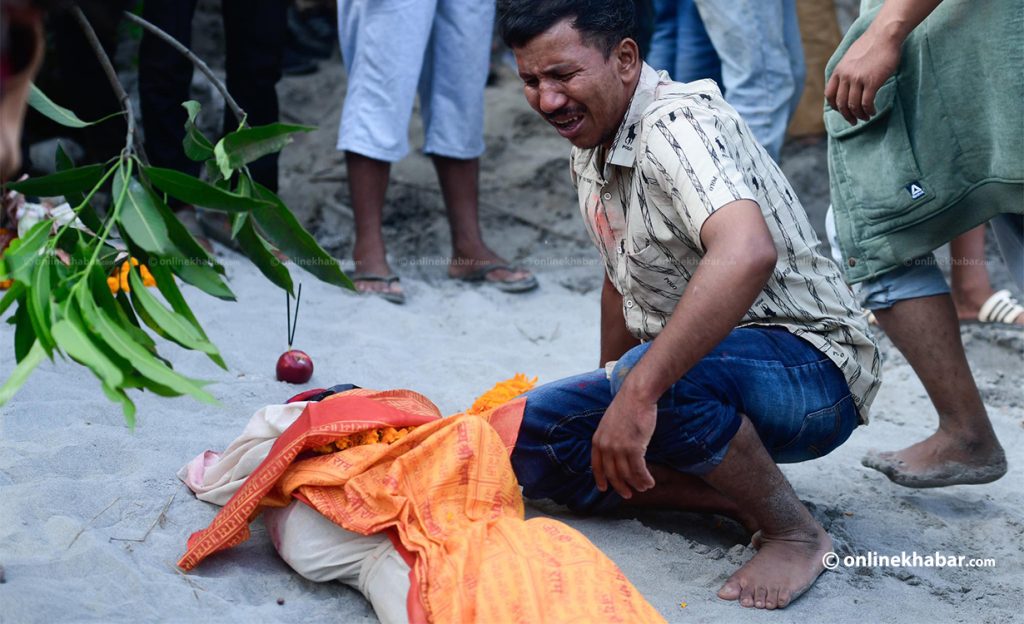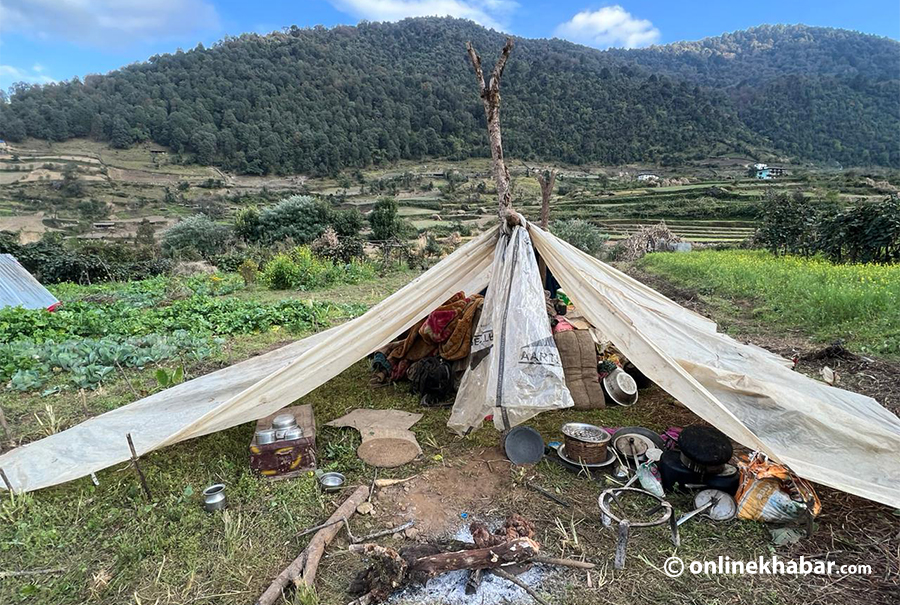
On November 18, Dume Pun, 70, from Sirpachaur Pungaon in Barekot rural municipality-1, Jajarkot, died due to cold.
His family of four, along with his wife and two children, had been living under a tarpaulin near their house that was damaged by an earthquake that hit Jajarkot and Rukum West on November 3. Continuous exposure to the cold left his body swollen as he died in his sleep.
His nephew Dal Bahadur Pun said he had complained of a slight headache during dinner the night before. In the morning, the family found him dead.
“It’s getting very cold here. We were given tarpaulin and some clothes but it is not enough as temperatures drop below zero at night,” says Dal Bahadur. “It is sad to say the cold killed our uncle.”
While alive, Dume barely received any aid but following his death, the villagers brought four bags of rice and blankets. Fresh tarpaulin was also brought to the house as his family found themselves contemplating why it took a person’s death to prompt any assistance.
Old people have it tough
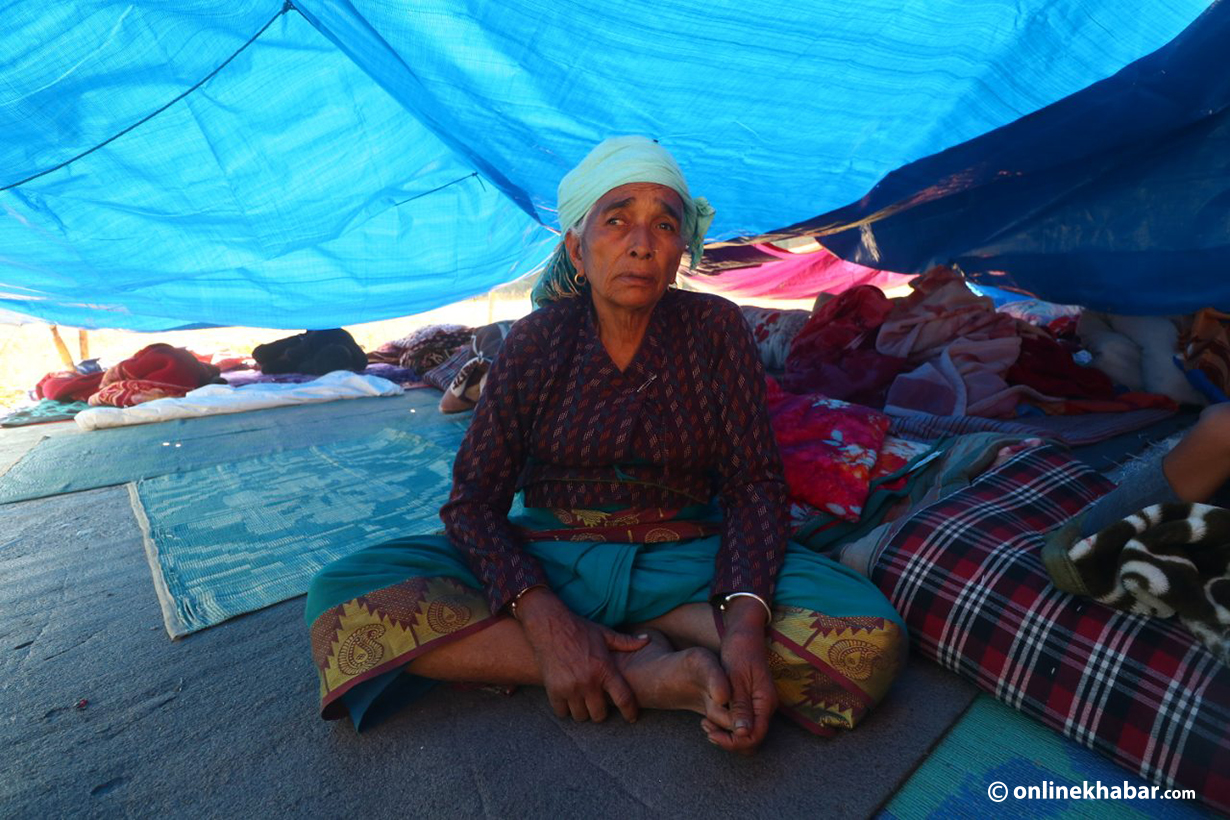
Bishnu Kumari Khatri, 70, from Tapu of Nalgad Municipality-8, survived the November 3 earthquake but passed away after being exposed to the cold while staying in a temporary shelter.
“Her body did not withstand the cold. Many like her have been suffering as some don’t even have warm food or blankets to endure the cold of the night,” says ward chair Badri Panta.
Nalgad mayor, Dambar Bahadur Raut says the four people have died due to cold since the earthquake. With the temperatures falling, Raut says the municipality does not have the resources to provide better shelter, food and blankets to people affected by the earthquake.
“We are doing whatever we can to protect children, chronically ill patients, and senior citizens,” he says.
On November 9, Pampha Rawal, 45, from Mayadanda in Nalgad Municipality-4, also died due to the harsh cold weather. A heart patient suffering from asthma, Rawal lived alone in a tent. The ward office did provide them with the tent, but it came too late as having to live in the open sky at night had caused major issues to Rawal’s health.
“We had to set up medical service in tents too as buildings had been destroyed. But these shelters are not warm and she died two days after being admitted,” says Panta.
Local ward officials believe that the government has failed to address the situation, putting more people at risk of contracting chronic diseases due to prolonged exposure to the cold. Rough data suggests that over 40,000 people are now vulnerable as winter sets in, lacking proper shelter, warm clothes, and blankets.
Surviving zero-degrees

According to the Department of Hydrology and Meteorology, the minimum temperature in the Barekot area or Jajarkot dropped below zero degrees Celsius on Friday. Nirajan Sapkota, senior meteorologist at the Department of Water and Meteorology, noted that the temperature in Barekot and Jumla is nearly identical. The expected minimum temperature in Jumla on Friday is minus 2.1 degrees Celsius.
As the minimum temperature continues to decrease, over 40,000 individuals, including children, senior citizens, pregnant women, and the disabled, are residing under tents in this cold weather.
“There is a need for a larger tent and warm clothing,” he said, adding, “If this continues, the number of deaths will increase rapidly. A family of four or five people resides under one tent, and if it rains, the situation will become even more challenging.”
The homeless in Jajarkot and Rukum West, affected by the earthquake, are struggling to shield themselves from the cold due to inadequate clothing. Karna Bahadur Batala from Aathbiskot Municipality-9 said that the entire village is falling ill due to the cold.
The Health Directorate in Karnali Province reports that among the high-risk population, there are 20,793 children under five, 2,507 pregnant women, and 3,452 expecting mothers. Additionally, there are 11,206 senior citizens, 2,858 individuals with chronic illnesses, and 1,835 disabled individuals facing these risks. Children are considered the most vulnerable among these groups.
With winter settling in, and snowfall imminent, the locals fear for the worse as five people have died to cold in Barekot where there had been no reported casualties due to the earthquake.
Mental suffering too
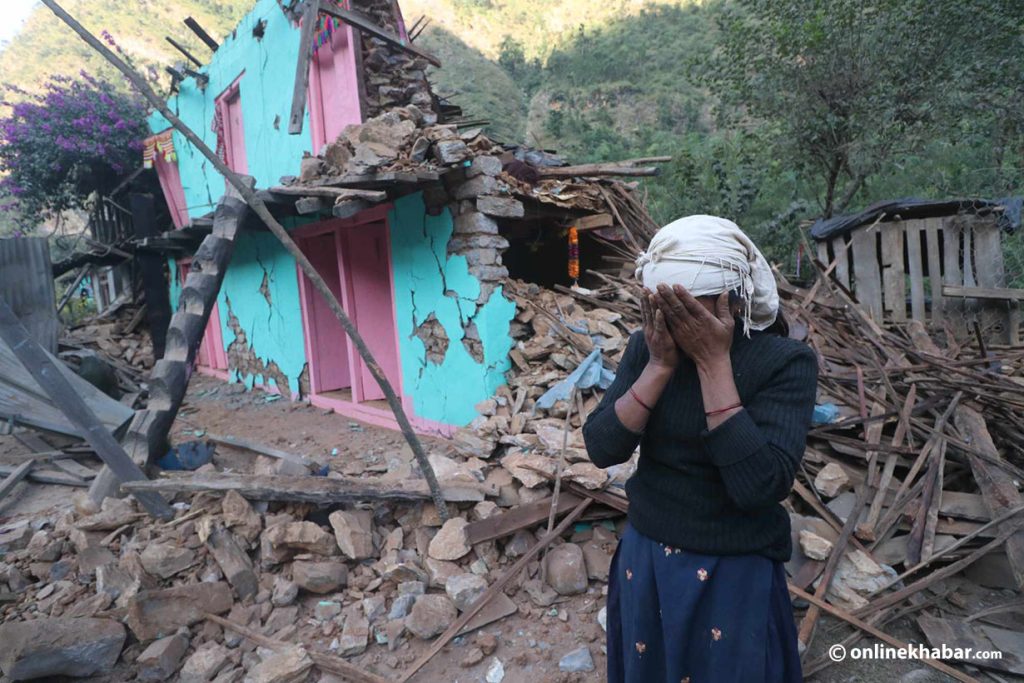
Another challenge seen in the earthquake-affected areas is the mental trauma and challenges among the survivors. To lose their families, relatives and loved ones in a go is not easy to deal with. And they are constantly worried about where to sleep, where to find shelter, and how to raise the children in such situations.
When things happen to people unexpectedly, it leaves a mental impact on them. The impact might be more severe in children, says Dr Sushil Samadarshi, a mental health expert at Karnali Provincial Hospital. “One can see the physical injuries but mental injuries are often ignored, despite their long-term impacts on children.”
Doctors also fear an epidemic breaking out in the region which would be detrimental to public health.
Jajarkot is a district that has previously encountered such epidemics. Over 300 people died during the diarrhoea outbreak in 2009. This happened due to a lack of access to clean water. In 2015, the swine flu struck the region, resulting in the loss of 35 lives due to insufficient standard treatments.
Earthquake survivor need more help
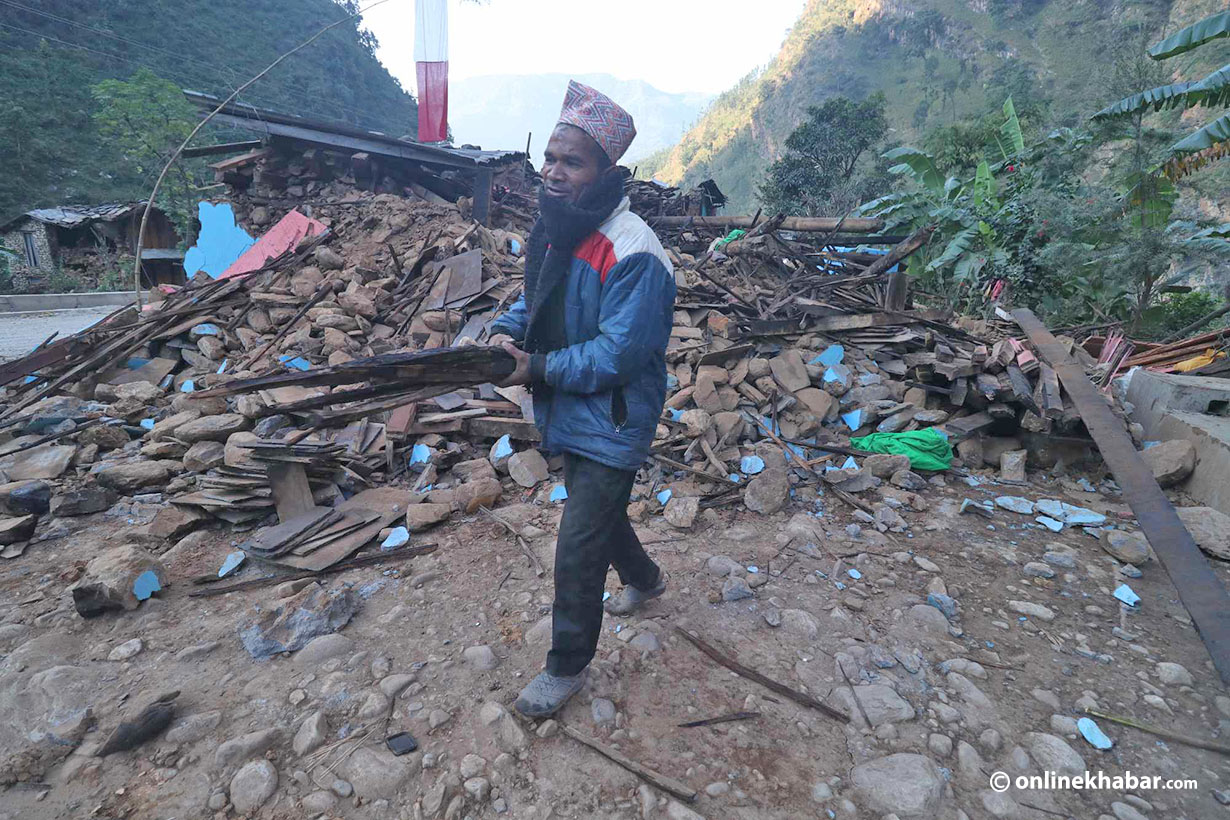
In some remote areas of the Jajarkot district, people do not even have the basics. Assistant Chief District Officer Harish Chandra Sharma said the District Administration Office in Jajarkot has appealed to donors to provide warm clothing and assist in relief distribution to fight off the cold in the district.
Pravesh Baduwal, Assistant Chief District Officer of Rukum West, acknowledged reports of cold-related deaths in the district, however, he said that the administration does not have accurate data on how many people have been affected by cold.
Sharma said that approximately 34,000 households have been affected in the district, whereas only 22,000 have received relief in the initial phase.
“Around 12,000 households don’t have the basics to survive this cold. We need help and we need it now,” says Sharma.
Lack of adequate food and secure shelter exposes earthquake survivors to a high risk of contracting pneumonia and other diseases with vulnerable groups such as women, children, the disabled, and senior citizens facing a serious crisis.
Dr Ujjwal Aryal, an internal medicine specialist, explains that cold weather can worsen the condition of individuals with chronic diseases.
“Those with heart conditions, in particular, may face increased challenges in colder temperatures, says Aryal.
Baduwal says that the municipality has received the necessary funds for constructing temporary housing. However, while the national government has pledged Rs 50,000 for temporary roof construction, the exact number of houses to be built remains undetermined.
Despite the government’s active presence in the capital, the prospect of the construction of temporary shelters before winter is unlikely. As a result, earthquake survivors in Jajarkot and Rukum West are forced to spend their nights in leaky tents.
Kiran Paudel, head of the disaster management department of UML, tasked with constructing houses in earthquake-affected areas, expresses disappointment with the government’s efforts in building temporary shelters.
“People with slightly better financial situations have set up temporary tents. However, the poor and vulnerable have struggled to even clear their belongings from the destroyed houses,” says Paudel.
Kamal Lamsal, Assistant Professor at Midwest University, highlights serious concerns about the government’s response to the cold-related deaths among earthquake survivors and sadness over the government’s priorities, focusing on issues like Durga Prasai and TikTok instead of addressing the challenges of debris removal post-earthquake, establishing temporary shelters, and caring for the chronically ill.
Meanwhile, political parties have deployed volunteers to assist in the affected areas. Starting from November 17, the UML has deployed 1,100 volunteers organised into 40 groups from various people’s organisations and other provinces. Likewise, the Nepali Congress has mobilised 1,100 volunteers, the Maoist has mobilised 3,100, and volunteers from other political parties have also been engaged in the earthquake-affected regions to construct temporary shelters.
Due to the cold weather, earthquake survivors are scattered, making rescue efforts challenging. Their lives are at risk, however, the government and top party leaders seem preoccupied elsewhere.
Assistant Professor Lamsal acknowledges the commendable efforts by the political parties but suggests there is more emphasis on publicity than actual work.
“Attempting to leverage a disaster for political gain is self-serving politics, which is unwelcomed.”


